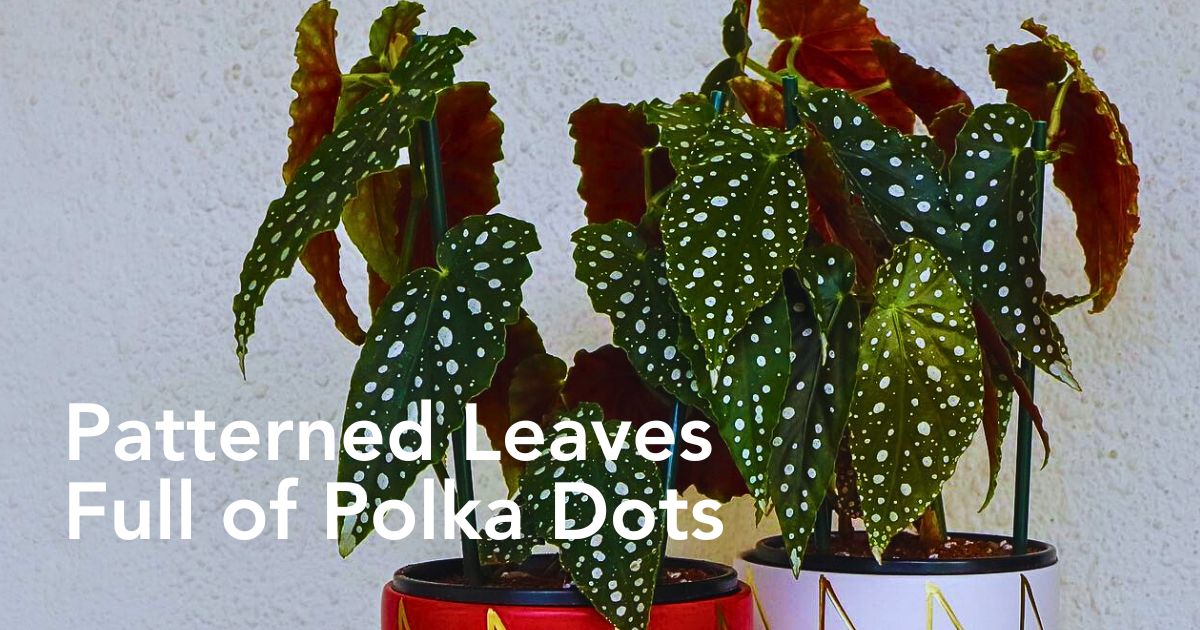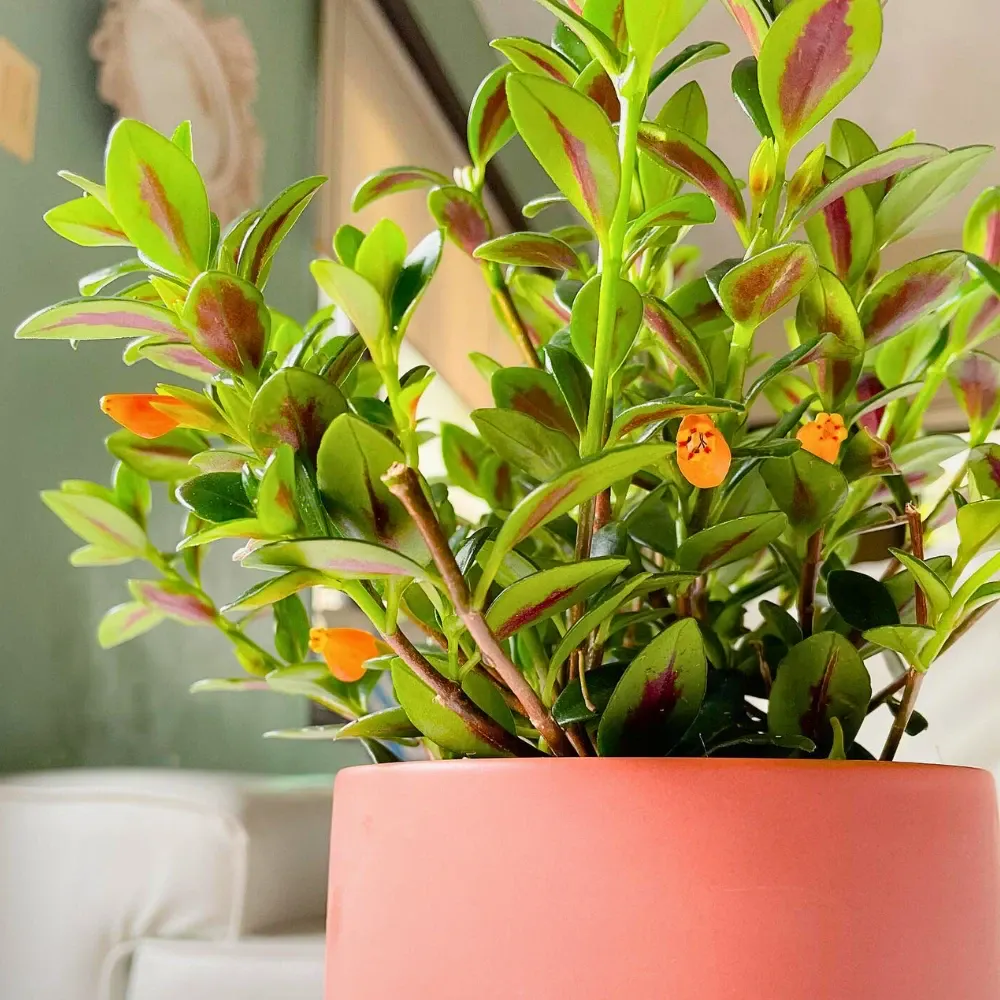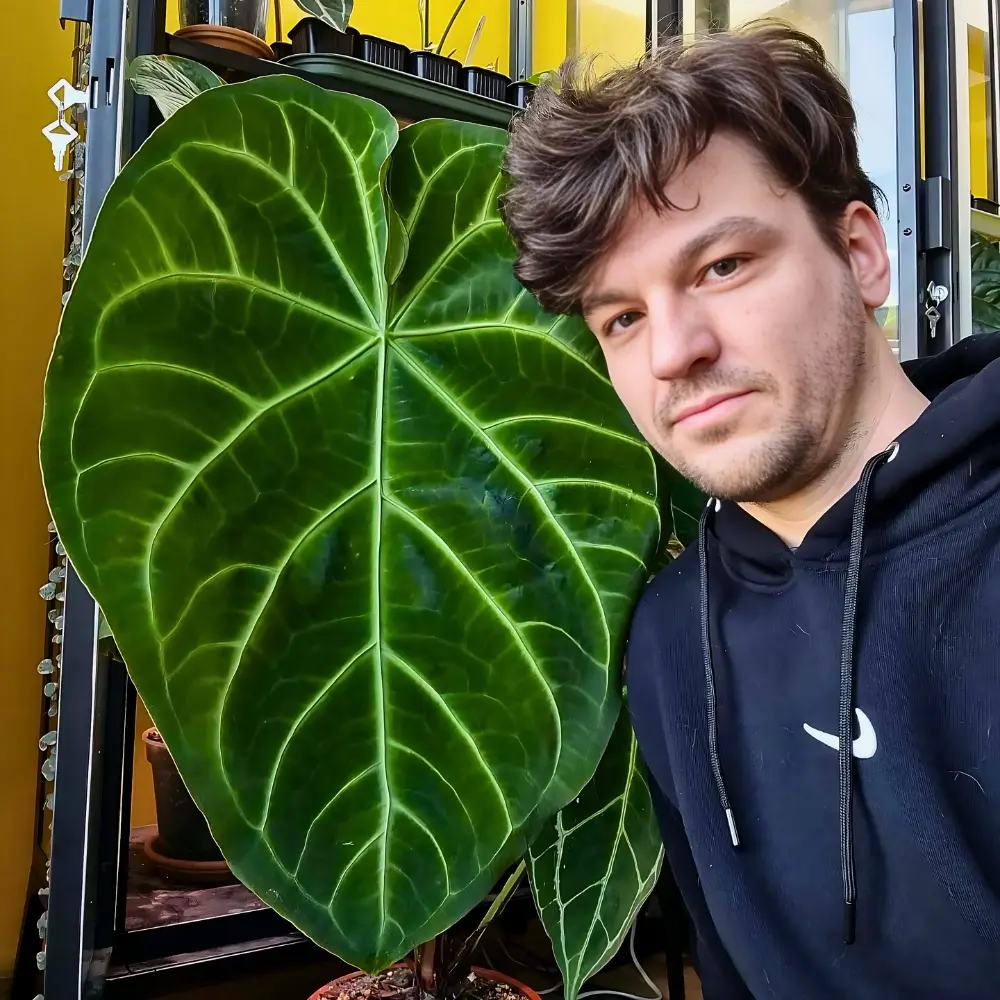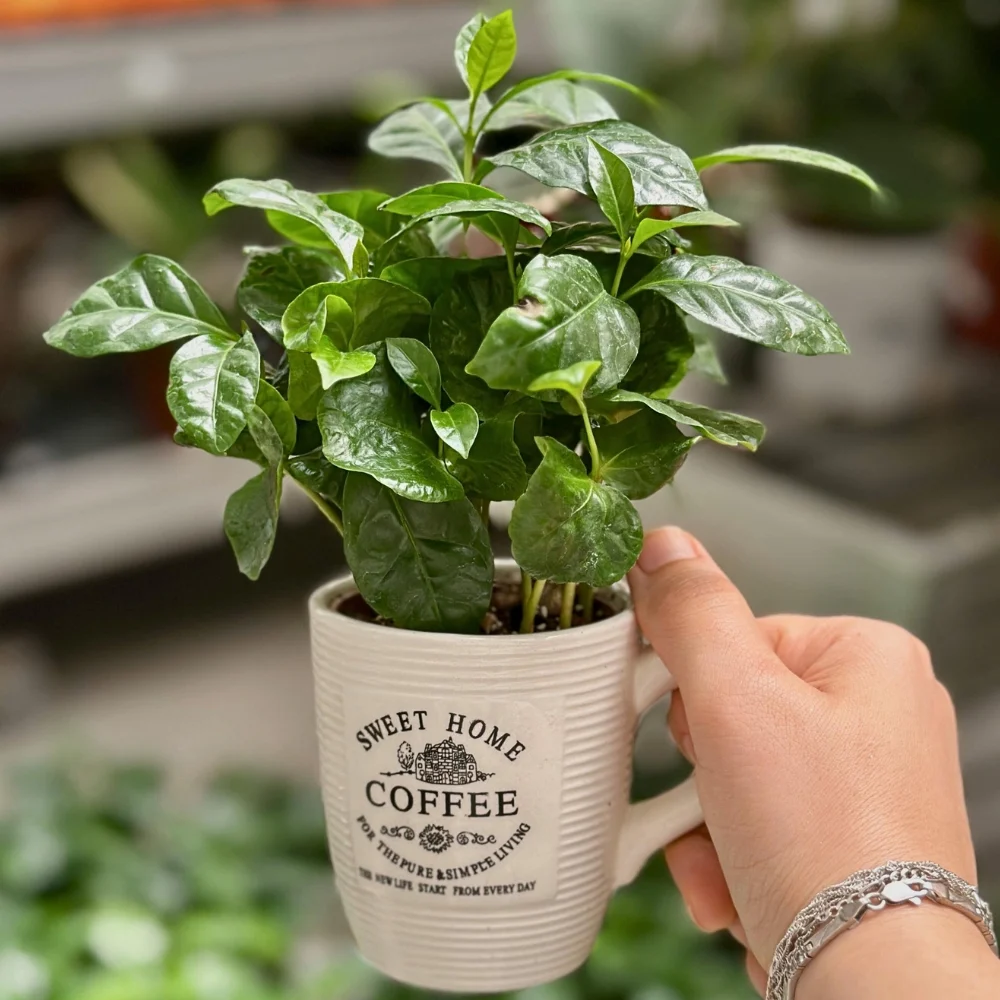One of the most popular and photogenic houseplants is the Begonia maculata, also known as the Polka Dot Begonia or the Spotted Begonia. While Begonias have a reputation for being the perfect grandmother plant, that's hardly the case with Begonia maculata. This large angel wing-shaped houseplant with patterned leaves full of polka dots is a real eye-catcher that deserves a spot in every home. The Polka Dot Begonia plant's leaves are bright green with silver polka dots and red undersides. A member of the Angel Wing Begonia family, this stunning variety showcases the characteristic wing-shaped foliage that makes these plants so distinctive.
Understanding This Angel Wing Begonia: Polka Dot Begonia, Begonia Maculata, or Spotted Begonia
Begonia maculata (or Polka Dot Begonia as it is often called) is a splashy show-stopper with olive-green leaves and contrasting spots that look fantastic. This Angel Wing Begonia plant belongs to a group of Begonias known for their distinctive leaf shape resembling angel wings. And you want to know something even better? The Polka Dot Begonia is also pretty easy to care for. No green thumb is required to impress your guests or roommates with this pretty houseplant. Among all the Angel Wing Begonias, this variety stands out for its manageable care requirements and striking appearance.
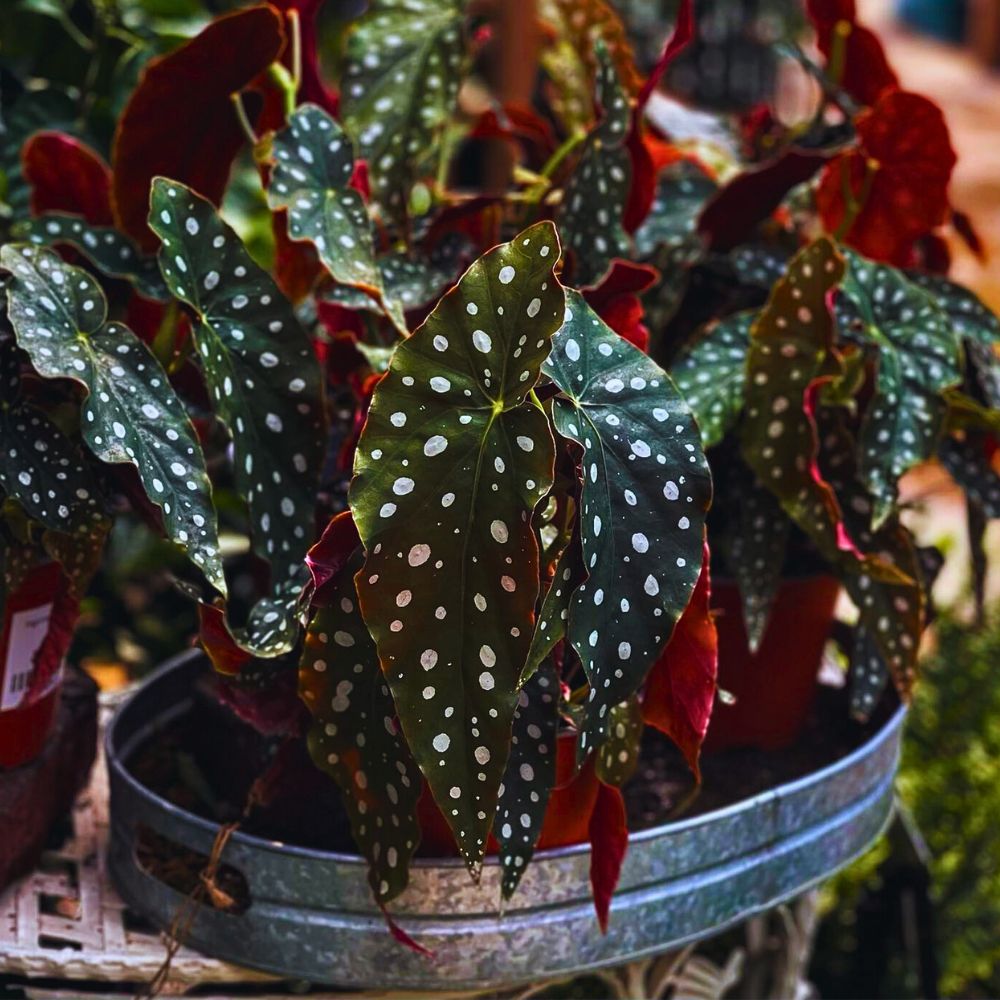
Native to the tropical forests of Brazil, this showy houseplant is highly valued for its striking foliage and delicate white flowers. Besides its undeniable beauty, the Begonia Angel Wing variety is manageable for indoor planting as it does not grow too tall. You can, therefore, grow one of these houseplants in a cubicle or a small apartment without being overwhelmed with greenery. The Begonia maculata blooms from spring until summer ends, and during its blooming, the undersides of the leaves turn a deep red hue, making this houseplant much more colorful and, of course, even more beautiful.
Notably, however, although they are a perfect houseplant, if you are a pet owner, you should know that Polka Dot Begonias are not pet-safe (and can be harmful to humans if ingested, as well). And while people often ask, "Are Angel Wing Begonias toxic to cats?" Well, the answer is yes, generally, Angel Wing Begonias are toxic to cats and other pets. The good news is that they are air-purifying, making them beneficial for indoor air quality despite their toxicity concerns.
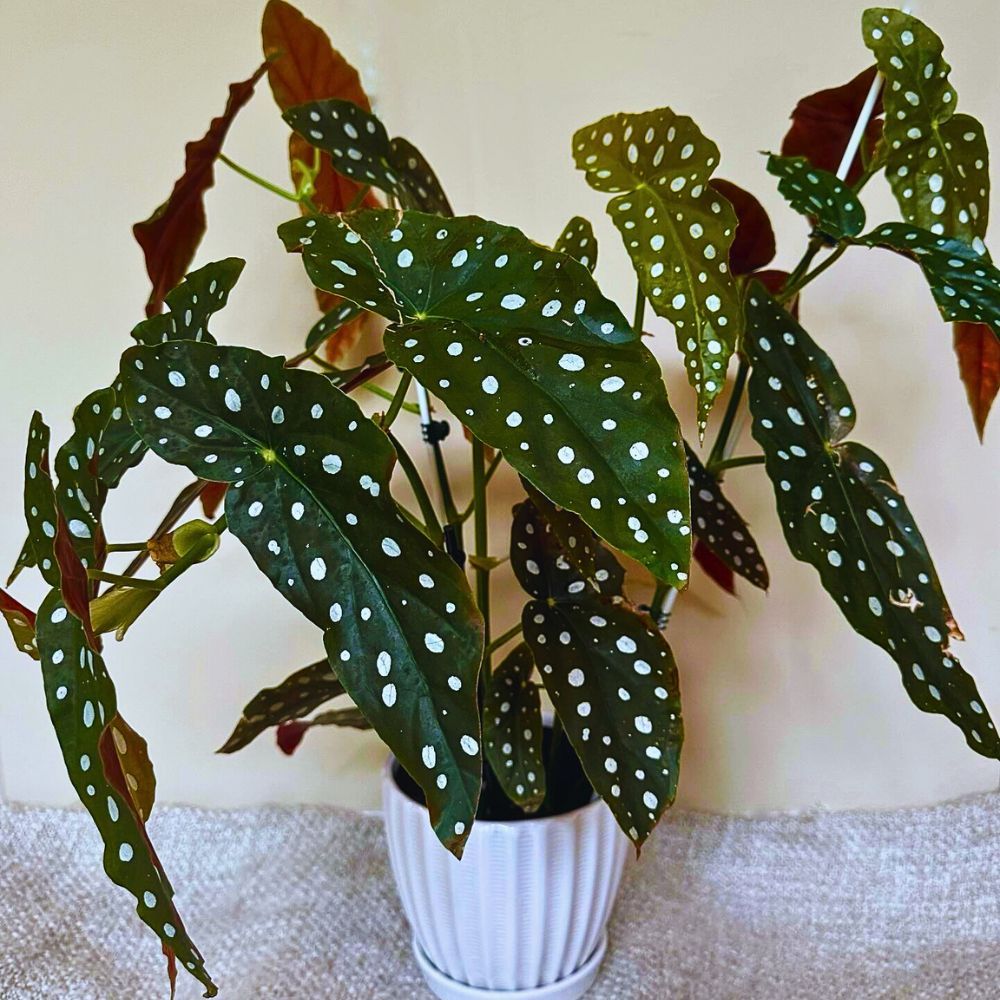
The Evolution of Angel Wing Begonia Through Innovative Breeding
The unique aesthetic appeal of Begonia maculata has, over the years, sparked interest among hobbyists and professional breeders aiming to enhance its characteristics. Breeding has, as a result, led to the development of new and improved varieties that surpass their predecessors in several ways. Selective breeding techniques led to the development of varieties with enhanced traits like leaf size, color intensity, and overall plant vigor. These efforts have resulted in more visually appealing plants and introduced more resilient and easier-to-cultivate varieties.
One of the significant advancements in breeding is the development of varieties with better branching. These new cultivars, like Begonia Spotlight Dark and Begonia Spotlight Green, are just amazing examples of improved Angel Wing Begonias! These varieties branch very well, unlike the botanical variety, and introducing them signifies a promising future for both growers and enthusiasts. The enhanced branching allows for faster cultivation for growers, as the plants fill out quicker and reach maturity in less time. The result is increased efficiency, making these varieties especially attractive to commercial growers looking to streamline their production cycles.
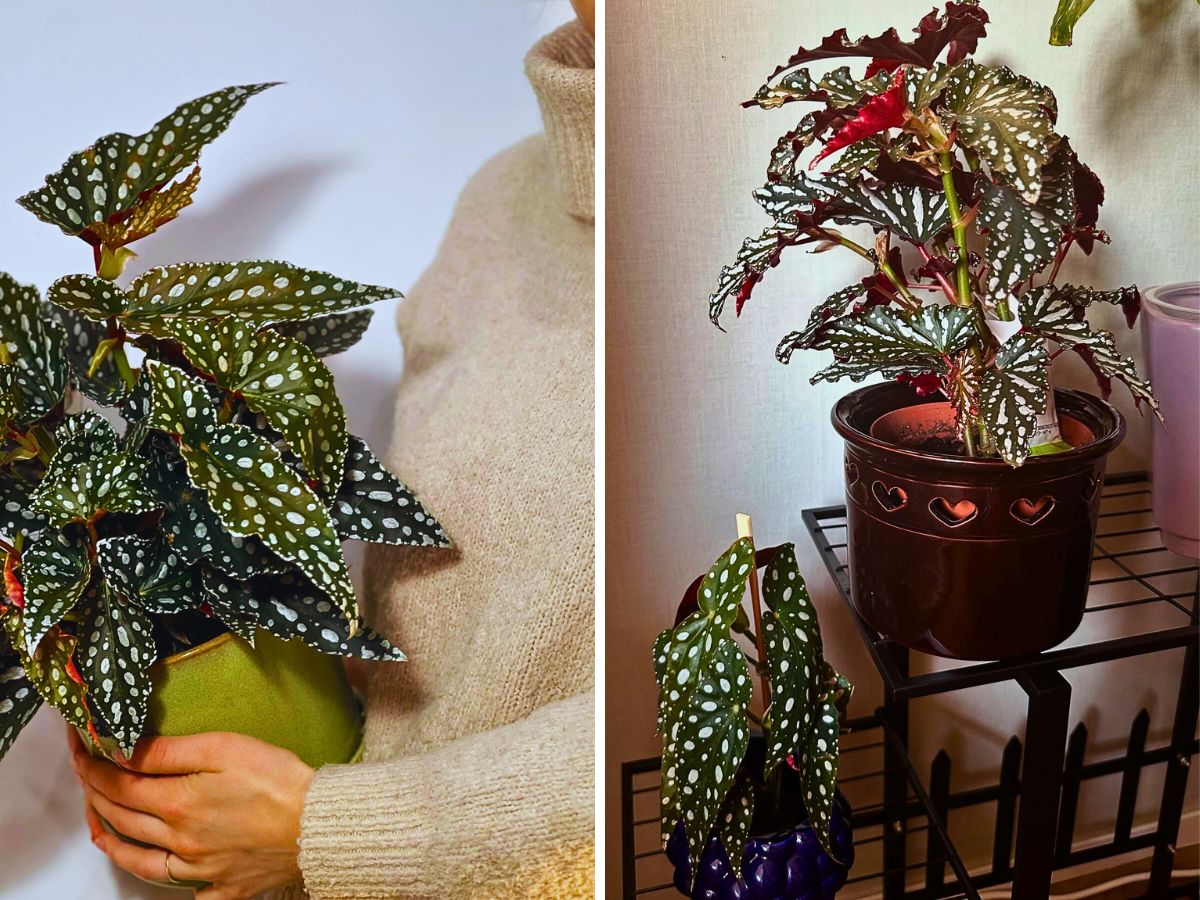
Koppe Is Breeding the Future of Angel Wing Begonias
Koppe Begonia, a renowned name in Begonia breeding, has been at the forefront of these breeding innovations, having introduced the two Begonia maculata varieties mentioned above that embody improved traits. Their excellent branching nature is a special key highlight for them. It results in denser foliage. For consumers, this means a 'fuller" pot with more leaves, volume, and greater visual appeal.
How to Care for Angel Wing Begonia
The Polka Dot Begonia can reach heights of up to five feet and has a vertical growth habit. Its leaves are a deep olive color with bright white and somewhat uniform spots. They have a narrow arrowhead shape and have burgundy undersides, perfectly showcasing the classic Angel Wing Begonia characteristics.
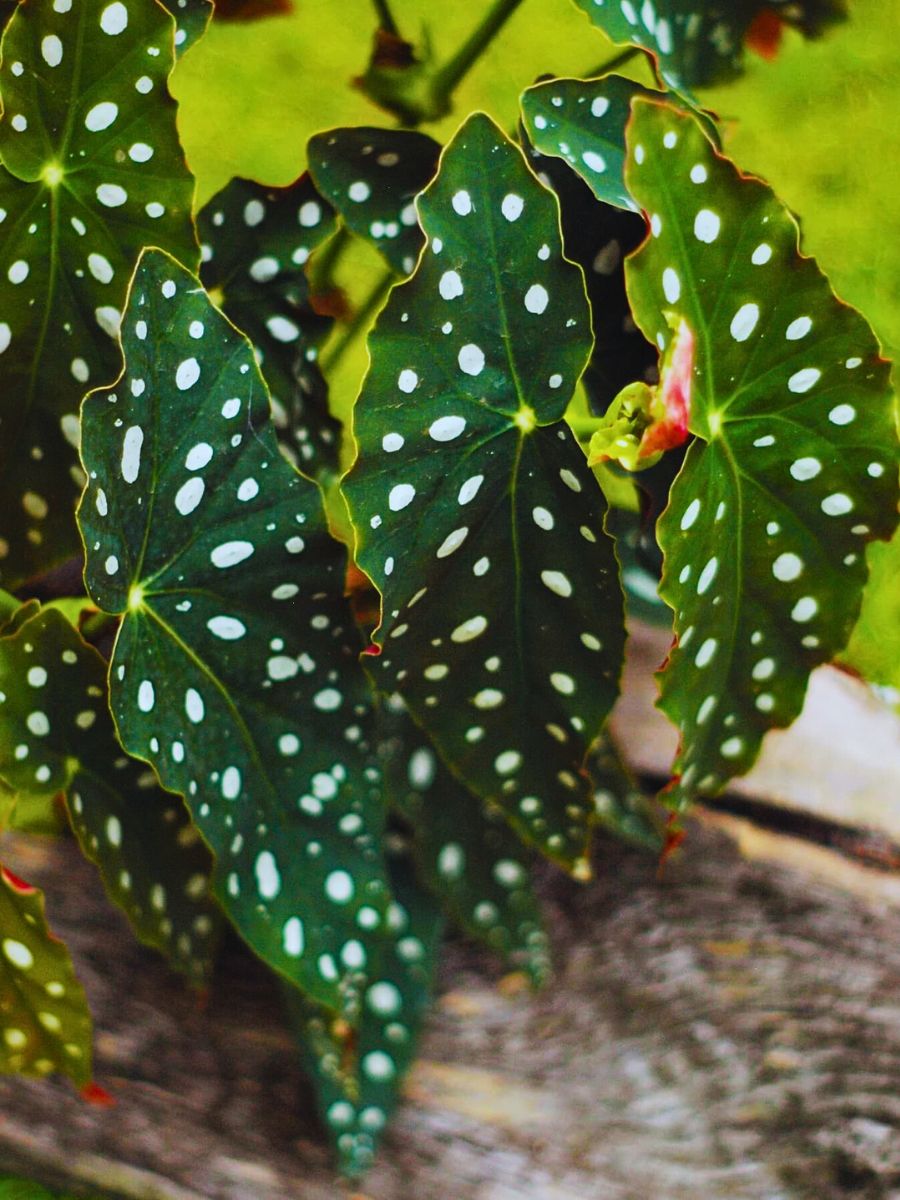
With the right conditions, the Polka Dot Begonia's flowering will have a similar shape to other Begonia plants. The flowers are white, rounded, fan-shaped, with a small yellow center. These flowers are always a sight to behold. So how can you take care of your spotted Begonia plant? Here are some factors and tips to consider to ensure your Angel Wing Begonia plant thrives:
Light Requirements for Ideal Angel Wing Begonia Care
When trying to get to know how to care for Angel Wing Begonias, understanding light requirements is crucial. Begonia maculata thrives in bright, indirect light. It can also tolerate some shade, but avoid direct sunlight as it can scorch the leaves. About the Polka Dot Begonia indoor care, this plant can ideally be placed next to a window that has some light-colored blinds to allow in just enough amount of light. Exposing your houseplant to too much sunlight can cause sunburn on the leaves or even the plant drying.
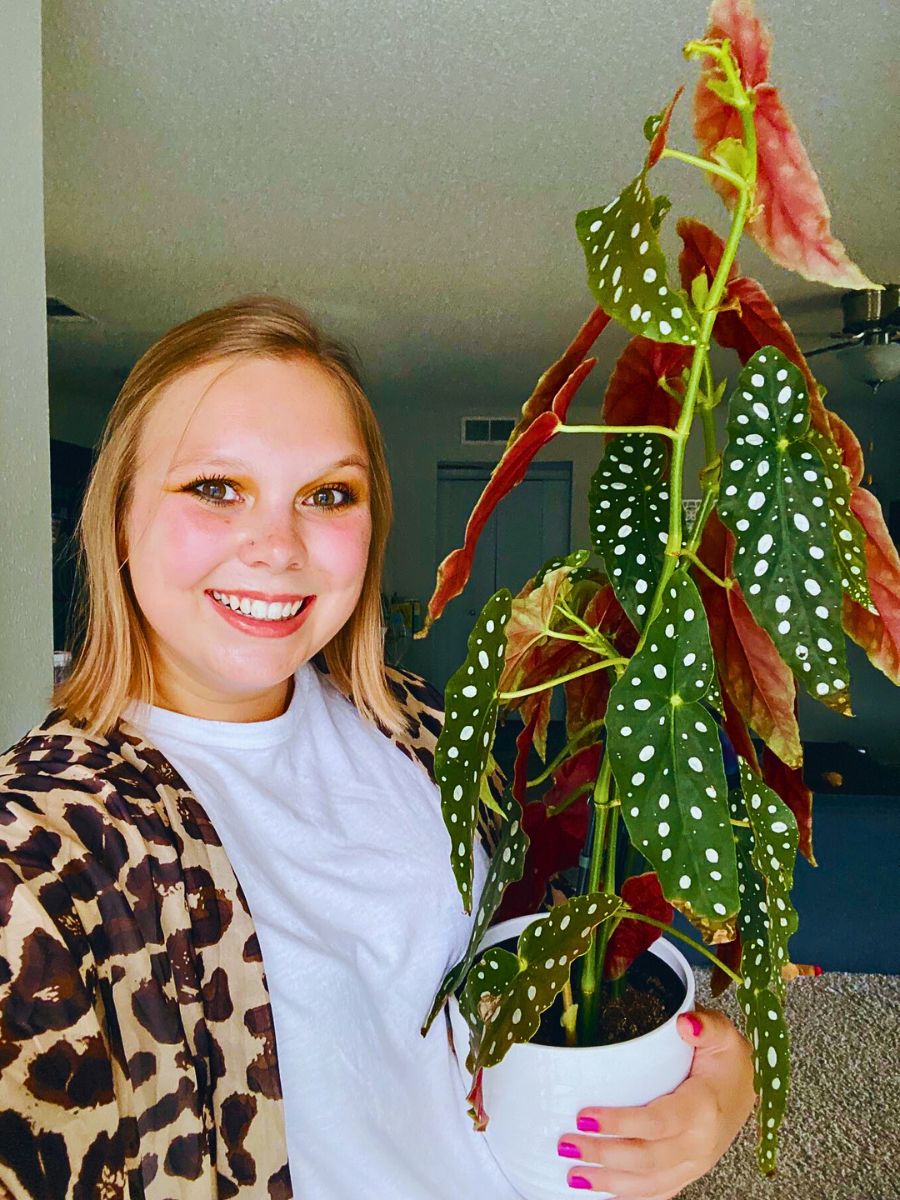
Tip: If you have to choose between a spot for your Begonia Maculata in either full sunlight or somewhere with less light, opt for the low-light spot. This plant has a better chance of thriving in partial shade.
You'll know your Begonia Maculata plant isn't getting enough light by its leaves; first, they lose some color, then turn yellow, and finally start to shed. The leaves will show scorched areas if they're getting too much sunlight.
Water Requirements for Proper Angel Wing Begonia Plant Care
Understanding how to care for the Angel Wing Begonia plant also includes addressing its watering needs as essential for success. Begonia maculata requires highly humid conditions to remain moist. The soil should, therefore, be kept moist but not soggy to give the houseplant just enough moisture to thrive. Water the plant when the top inch of the soil feels dry, and make sure that the pot has drainage holes to prevent water from accumulating at the bottom. Depending on the season, you can water the plant once every four days in summer and every week to two weeks in winter.
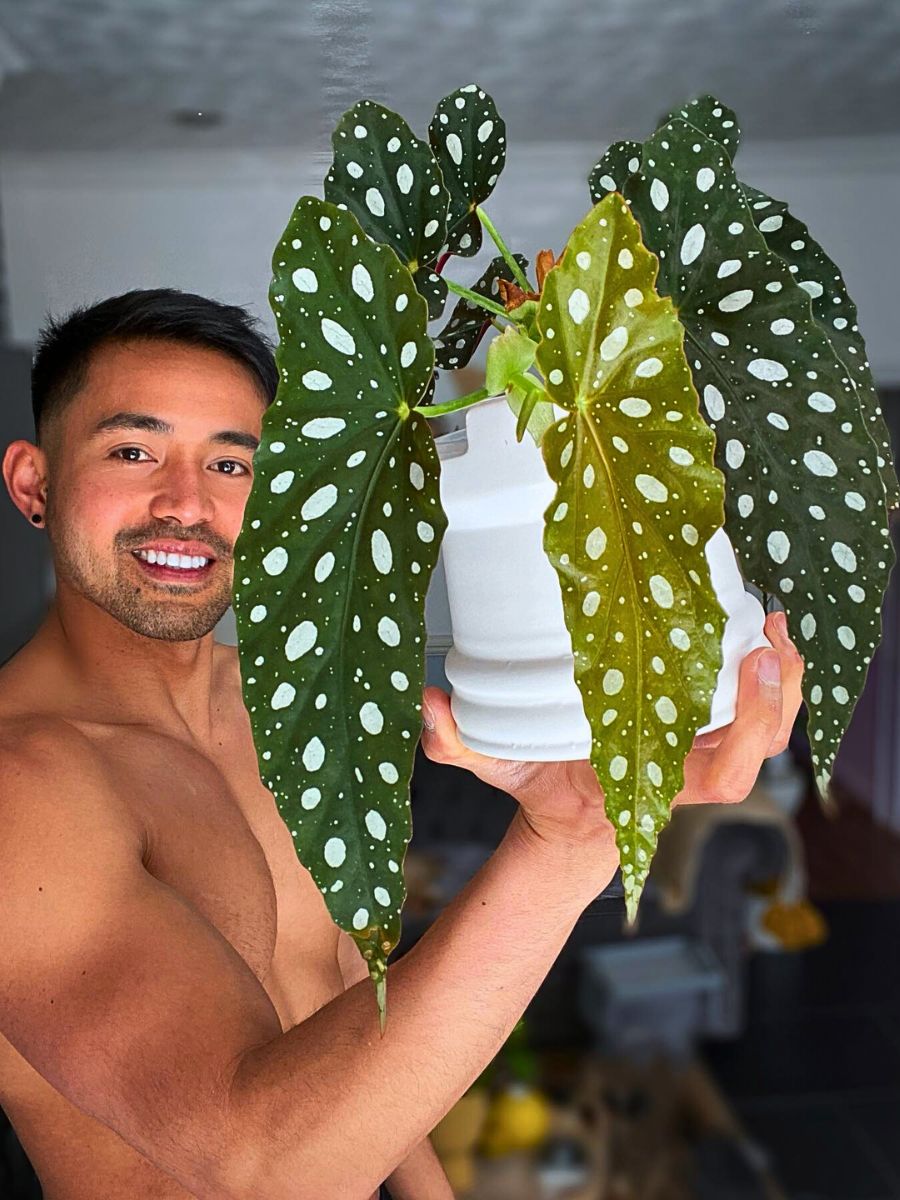
The Best Soil for Your Angel Wing Begonia
As previously indicated, the Spotted Begonia requires moist soil. You should, therefore, strive to have a soil mix that retains water quite well. The ideal soil for proper Angel Wing Begonia care should not be easily compacted, especially after watering.
Angel Wing Begonia Care Concerning Humidity and Temperature
Proper Angel Wing Begonia care also requires attention to humidity levels. Begonia maculata prefers highly humid conditions. When growing this houseplant, consider misting the leaves regularly or placing a humidifier near the plant. This Begonia prefers temperatures between 18°C and 24°C (65°F and 75°F). Also, avoid placing the plant in drafty areas or near heating or cooling vents.
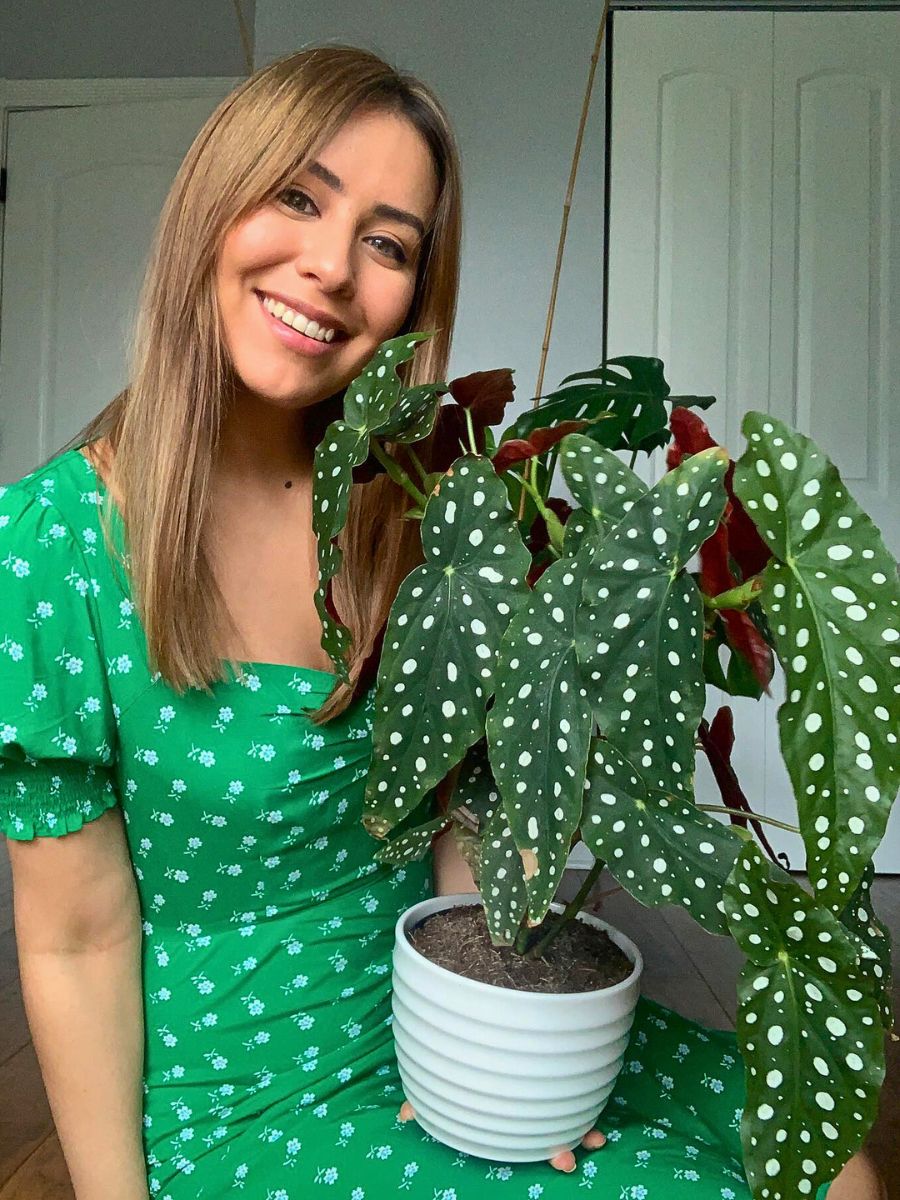
Fertilizer Needs of the Angel Wing Begonias
As a flowering plant, how to care for Angel Wing Begonia also includes proper fertilization. These Begonias require fertilizer occasionally to ensure that they produce flowers. One should, therefore, use a balanced fertilizer on the houseplant every two to three weeks during the growing season. When watering the spotted Begonia houseplant, in particular, you can add liquid fertilizer to the water. No special mix is needed for the Angel Wing Begonia plants, just a balanced fertilizer with equal NPK numbers. And, dilute it 50% and feed them, but slightly cut back during the winter.
Pruning and Repotting Your Angel Wing Begonia Plant
For optimal growth of your Angel Wing Begonia plant, trim any yellow or damaged leaves to keep the plant healthy and promote its new growth. You can also pinch back the stems to encourage bushier growth. This spotted indoor plant also prefers to be slightly root-bound. So you can repot only when necessary. Also, be sure to use a well-draining soil mix and a pot with drainage holes.
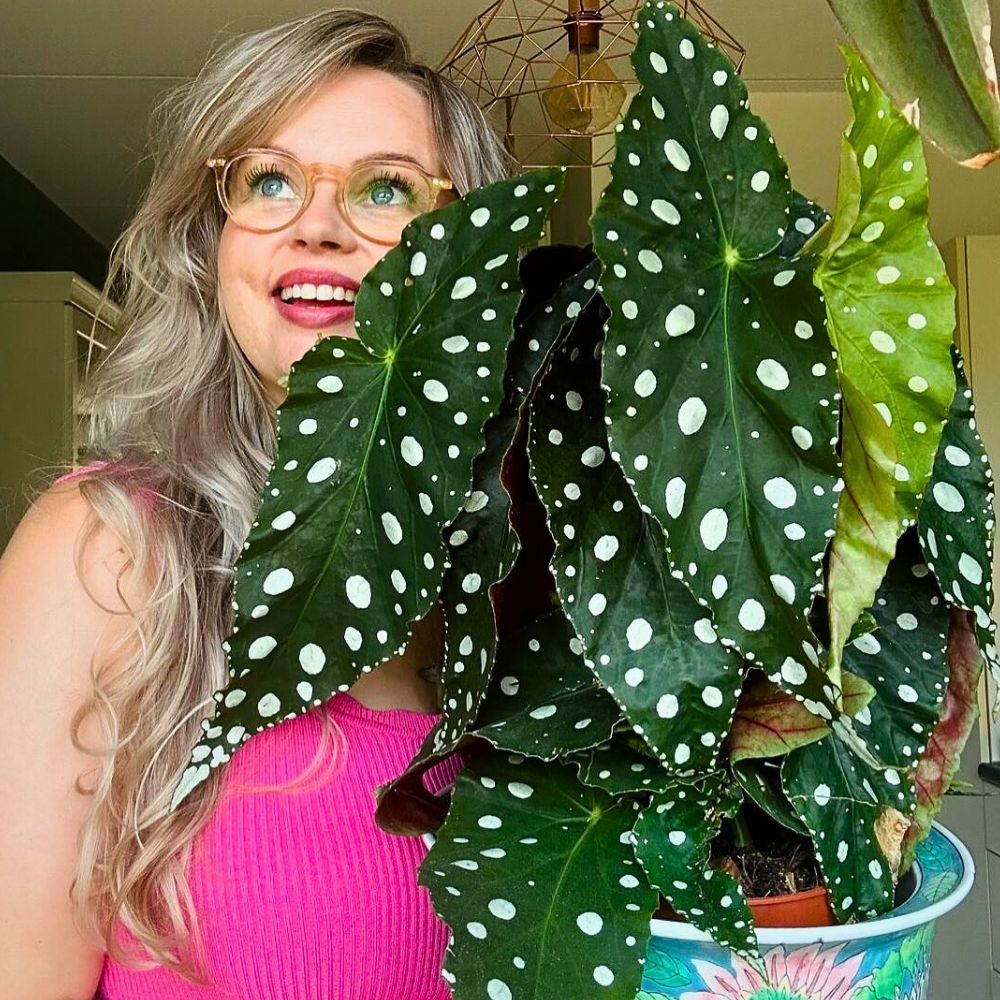
A Step-By-Step Guide on How to Propagate Angel Wing Begonias
How to propagate an Angel Wing Begonia is quite easy, as different varieties of this plant can easily be propagated through stem cuttings. There are, however, steps that should guide you when propagating the Angel Wing Begonia houseplants. First, select a healthy stem with several leaves to propagate this white spotted leaf plant. The stem should be at least 10 cm (4 inches) long. Then, cut the stem just below a leaf node using a sharp, clean pair of scissors or pruning shears. Proceed to remove the leaves from the bottom half of the stem.
Later, dip the cut end of the stem into rooting hormone powder to encourage the Angel Wing Begonia's root growth. Fill a small planting pot with a well-draining soil mix and make a hole in the center. Place the stem cutting in the hole and gently press the soil around it. Water the cutting until the soil is moist enough, ensuring that it is not waterlogged.
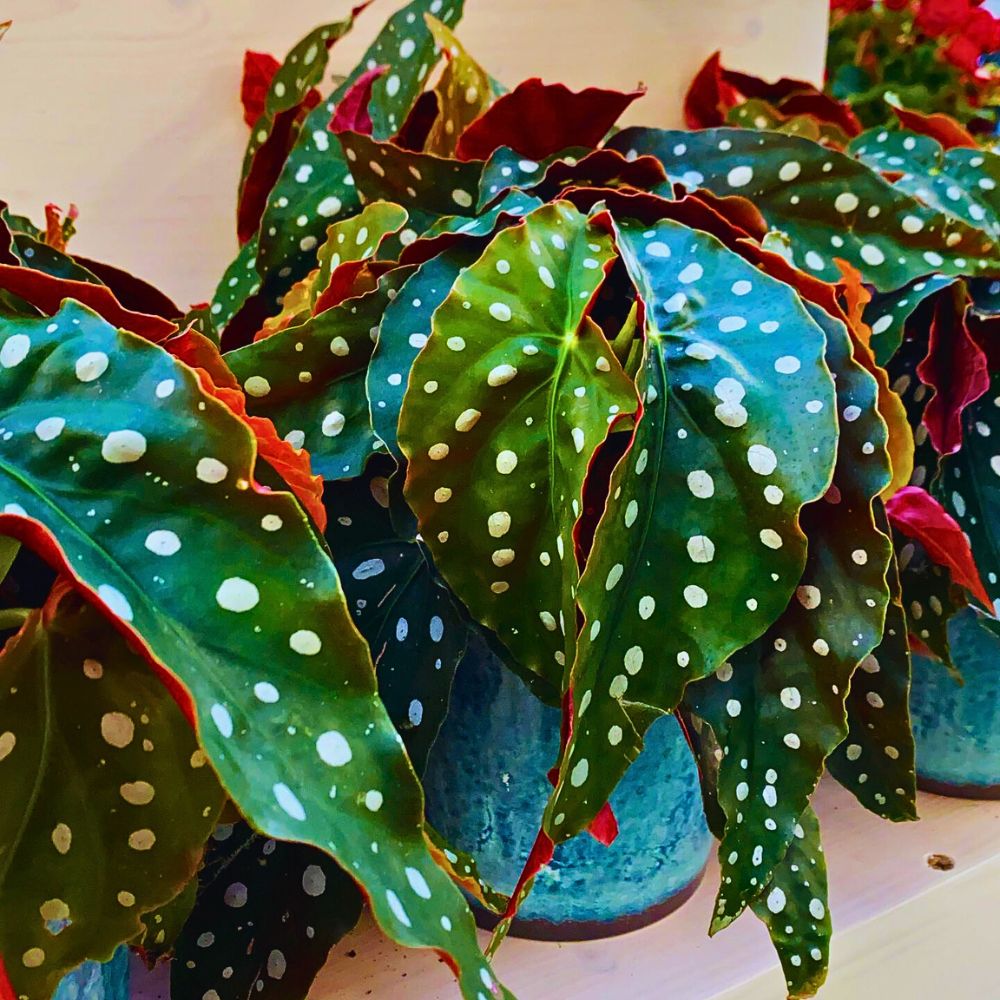
Cover the pot with a plastic bag or a clear plastic container to create a humid environment. Then, place the pot in bright, indirect light, avoiding direct sunlight. Keep the soil moist and mist the leaves regularly to maintain high humidity. Roots should start to form after four to six weeks. Once the roots have developed, remove the plastic covering and treat the new plant like any other Angel Wing Begonia plant.
In spring and summer, when the Begonia is actively growing and the temperatures are higher with more light, the plant must be watered more often. They can be a little tricky to water in the winter. Just water less and less often. The Polka Dot Begonia doesn't go dormant, but will slow down considerably over the winter.
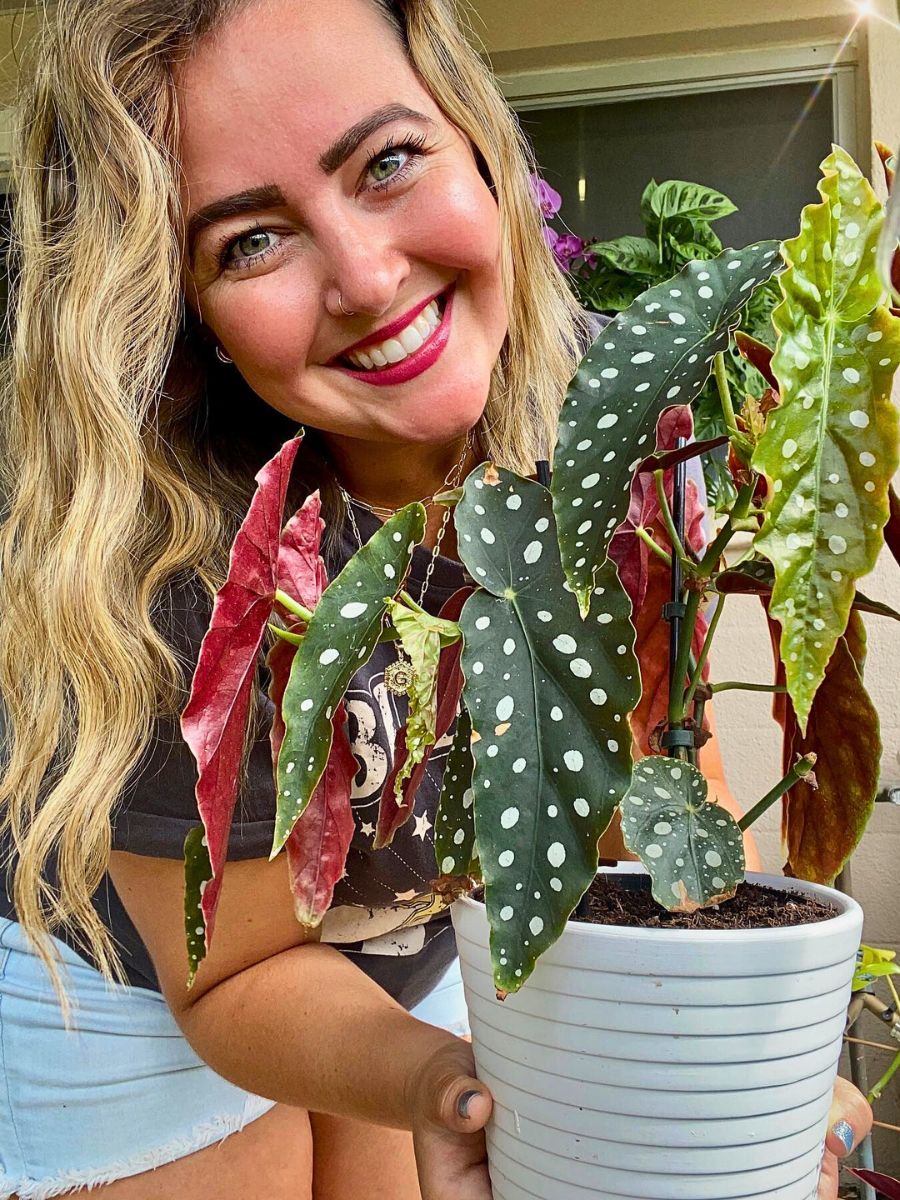
Different Varieties of the Angel Wing Begonia Make for a Great Beginner Houseplant
Angel Wing Begonias, including the Begonia maculata, bloom from spring to fall, producing clusters of white flowers with cheery yellow centers on a single stem. They are more of a nice accent than a feature. According to a grower, one usually does not need to help them bloom. Normal fertilization and good light should do the trick. Also, while the Angel Wing Begonia plant may seem picky, it is relatively easy to care for once you get it settled into a good place with light, water, and away from heat and AC vents.
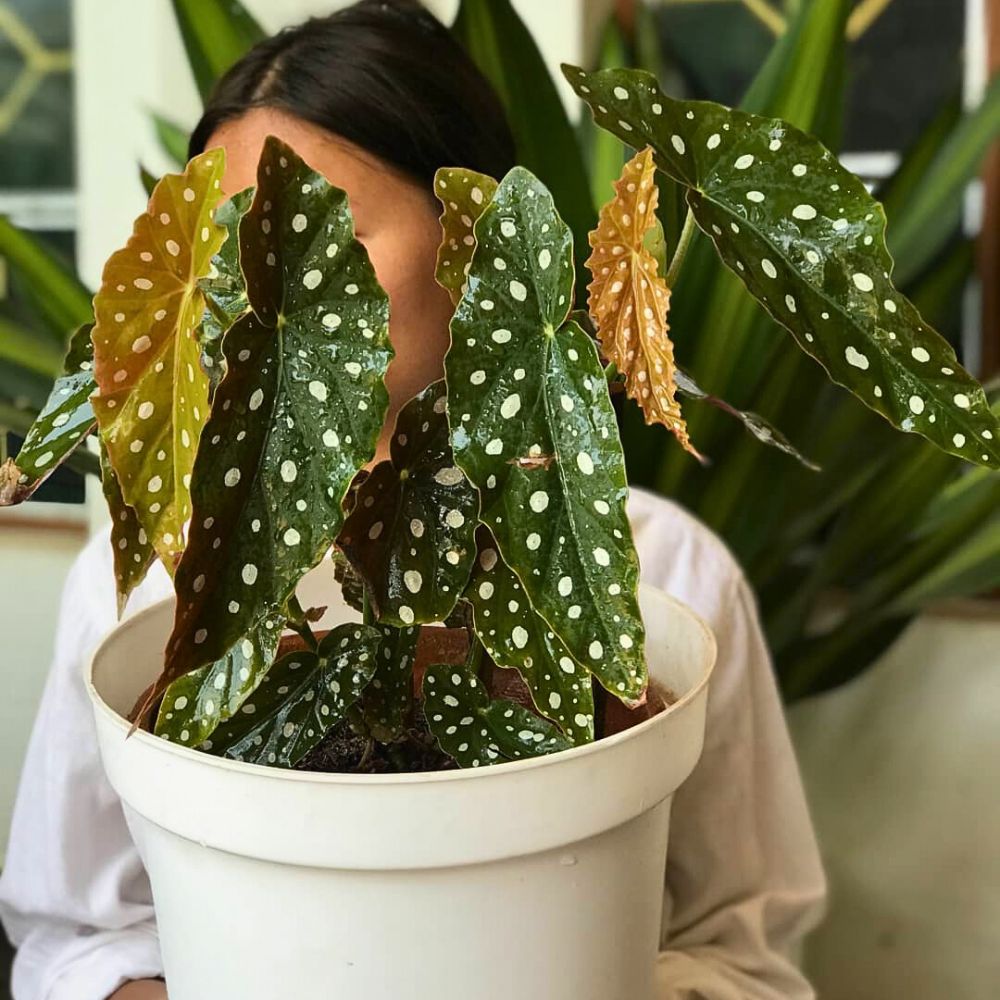
For this reason, this houseplant is suitable for beginners, who will relish the rare pop of color and flowers that this easy-to-care-for houseplant brings into their homes. If you would love to know more about leaf Begonias, you can read about them in the article 'The 12 Best Leaf Begonia Plants That Thrive Indoors'.
Feature image by @official_plants. Header image by @leaf.lushsg.

